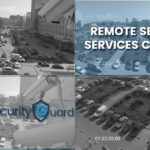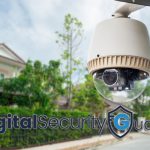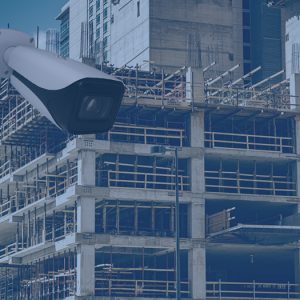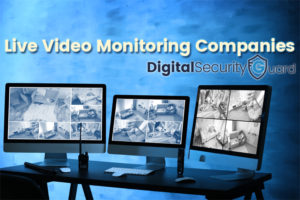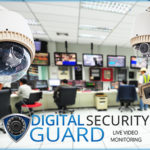You’re facing a critical decision that will impact your business’s security and budget for years to come. Do you hire traditional security guards or invest in remote monitoring technology?
It’s not just about cost—though the $80,000+ annual difference certainly matters. It’s about which approach actually keeps your property safer, provides better documentation, and gives you genuine peace of mind without draining your resources.
This comprehensive comparison examines remote monitoring versus security guards across every dimension that matters: effectiveness, cost, coverage, liability, scalability, and real-world performance. By the end, you’ll have the data-driven insights needed to make the right choice for your business.
The verdict might surprise you. The solution that costs 60-75% less often delivers superior protection.
Quick Comparison Overview
| Factor | Traditional Security Guards | Remote Video Monitoring |
|---|---|---|
| Annual Cost | $140,000 – $215,000 | $40,000 – $80,000 |
| Coverage Area | Single location, limited range | Multiple locations simultaneously |
| Hours of Coverage | 40-50 hrs/week per guard | 168 hrs/week (24/7/365) |
| Response Time | 5-15 minutes | 10-20 seconds |
| Breaks/Gaps | Meals, shifts, sick days | None – continuous |
| Documentation | Handwritten logs | Complete video evidence |
| False Alarms | Cannot verify | AI + human verification |
| Scalability | +$140K per location | +$3K-6K per location |
| Liability Risk | High (confrontations, injuries) | Low (no physical contact) |
The Security Guard Reality: What You’re Actually Getting
Before comparing technologies, let’s examine what traditional security guards actually provide—beyond the marketing promises.
What Security Guards Do Well
Physical presence and deterrence: A uniformed guard creates a visible deterrent that can discourage opportunistic criminals. The mere presence signals that someone is watching.
Customer service functions: Guards can greet visitors, provide directions, accept deliveries, and offer a human touch that technology cannot replicate.
Immediate physical response: For situations genuinely requiring hands-on intervention—escorting employees to vehicles, restraining trespassers until police arrive—guards provide on-site capabilities.
Flexibility for unusual situations: Human judgment adapts to unique circumstances that might not trigger automated systems.
The Hidden Limitations
Coverage constraints: One guard monitors only their immediate vicinity—typically 50-100 feet of visual range. Blind spots, building corners, and distant areas go unwatched.
According to the U.S. Bureau of Labor Statistics, security guards walk an average of 4-6 miles per shift. During that time, most of your property remains unmonitored.
Human limitations: Guards get tired, distracted, take breaks, and occasionally fall asleep. A Security Magazine study found that human attention drops by 40% after just 20 minutes of continuous monitoring.
Predictable patterns: Criminals stake out locations and learn guard routines—break times, patrol routes, shift changes. Once they know the pattern, they know when to strike.
Inconsistent quality: Guard performance varies dramatically by individual. Your night shift guard may be excellent while your weekend guard barely stays awake.
Limited documentation: Handwritten incident reports lack detail, timestamps are approximate, and memories fade. “The suspect was about 6 feet tall, wearing dark clothing” doesn’t help police much.
The Real Cost Comparison
Traditional Security Guard True Costs
Most businesses only calculate the hourly wage, missing the complete financial picture:
ANNUAL COST PER SECURITY GUARD POSITION
━━━━━━━━━━━━━━━━━━━━━━━━━━━━━━━━━━━━━━━━━
Base Wages (40 hrs/week × $25/hr):
└─ $52,000/year
Overtime & Holiday Pay (avg 200 hrs/year):
└─ $7,500/year
Benefits Package (health, dental, vision):
└─ $15,000 - $25,000/year
Workers' Compensation Insurance:
└─ $3,000 - $8,000/year
Unemployment Insurance:
└─ $2,000 - $4,000/year
Training & Certification:
└─ $2,000 - $5,000/year
Uniforms & Equipment:
└─ $1,000 - $2,000/year
Management & Administration:
└─ $8,000 - $15,000/year
Turnover & Replacement Costs:
└─ $5,000 - $10,000/year (300% industry avg)
────────────────────────────────────────
TOTAL: $95,500 - $128,500 per guard
For 24/7 Coverage (3.5 guards needed):
────────────────────────────────────────
TOTAL: $334,250 - $449,750/year
Remote Monitoring Investment
ANNUAL REMOTE MONITORING COSTS
━━━━━━━━━━━━━━━━━━━━━━━━━━━━━━━━━━━━━━━━━
Year 1 Setup:
├─ Equipment (cameras, NVR): $15,000 - $30,000
├─ Installation: $5,000 - $15,000
├─ Network Infrastructure: $2,000 - $5,000
└─ Initial Setup: $22,000 - $50,000
Monthly Monitoring Service:
├─ Per-camera monitoring: $50 - $150/month
├─ 8-camera system: $400 - $1,200/month
└─ Annual Service Cost: $4,800 - $14,400/year
Year 1 Total: $26,800 - $64,400
────────────────────────────────────────
Years 2+: $4,800 - $14,400/year
(equipment already owned)
5-Year Total: $46,000 - $122,000
vs Guards: $1,671,250 - $2,248,750
TOTAL SAVINGS: $1,625,250 - $2,126,750
ROI Timeline: Most businesses achieve full payback on remote monitoring within 12-18 months, then enjoy 60-75% ongoing savings.
️ Effectiveness Comparison: Which Actually Prevents Crime?
Crime Deterrence Rates
Security Guards:
- Deterrence rate: 70-75% (when guard is present and alert)
- Effectiveness drops to 30-40% during breaks, shift changes, distractions
- Criminals observe and exploit predictable patterns
Remote Monitoring:
- Deterrence rate: 90-95% (verified by industry studies)
- No predictable patterns to exploit
- Immediate intervention regardless of time or circumstances
- Criminals don’t know when they’re being actively watched
Response Capabilities
| Scenario | Security Guard Response | Remote Monitoring Response |
|---|---|---|
| After-Hours Break-In | If guard notices, calls police (5-15 min) | AI detection + human verification + police notification with video (20-30 seconds) |
| Parking Lot Incident | Must physically reach location (3-10 min) | Multiple camera angles + two-way audio + immediate police dispatch |
| Multiple Simultaneous Issues | Can only be in one place | Monitors all locations simultaneously |
| Suspicious Activity | May miss if on patrol elsewhere | AI flags + professional evaluation |
| Documentation | Verbal description, rough notes | Complete HD video with timestamps |
Real-World Performance Data
Detection Accuracy:
- Guards: 60-70% (limited by human attention, distraction, fatigue)
- Remote monitoring: 95%+ (AI detection + human verification)
False Alarm Rate:
- Guards: 15-25% (cry wolf effect from overzealous reporting)
- Remote monitoring: <5% (dual verification process)
Incident Prevention:
- Guards: 65-75% prevention rate
- Remote monitoring: 90-95% prevention rate
The difference? Remote monitoring provides continuous, unpredictable oversight that criminals cannot pattern or avoid.
Coverage & Capability Analysis
Geographic Coverage
One Security Guard Covers:
- ~50-100 foot visual range
- One location at a time during patrols
- Limited ability to monitor while stationary
- Cannot effectively cover multiple buildings
Remote Monitoring Covers:
- Unlimited geographic range
- 8-16 cameras per monitoring station
- Multiple buildings/locations simultaneously
- Every camera monitored 24/7 without gaps
Visual Coverage Over Time
24-HOUR COVERAGE COMPARISON
━━━━━━━━━━━━━━━━━━━━━━━━━━━━━━━━━━━━━━━━━
Security Guard (Single Shift):
12am ████████ (on duty)
4am ░░░░░░░░ (off duty)
8am ░░░░░░░░ (off duty)
12pm ████████ (on duty)
4pm ████████ (on duty)
8pm ░░░░░░░░ (off duty)
────────────────────────────
Covered: 8 hours (33%)
Uncovered: 16 hours (67%)
Security Guard (24/7 - 3.5 guards needed):
Cost: $334,250/year
Gaps: Shift changes, breaks, sick days
────────────────────────────
Covered: ~90% (with gaps)
Remote Monitoring:
12am ████████ (full coverage)
4am ████████ (full coverage)
8am ████████ (full coverage)
12pm ████████ (full coverage)
4pm ████████ (full coverage)
8pm ████████ (full coverage)
────────────────────────────
Cost: $40,000-80,000/year
Covered: 100% (no gaps)
Multi-Location Capabilities
Guards: Each location requires separate guards at $140K+ annually
Remote Monitoring: Add locations for $3,000-6,000/year each
Example – 5 Locations:
- Guards: $700,000/year ($140K × 5)
- Remote monitoring: $58,000/year ($40K base + $3.6K × 5 locations)
- Savings: $642,000 annually
⚖️ Liability & Risk Considerations
Security Guard Liability Exposures
Physical Confrontation Risks:
- Assault lawsuits from suspects claiming excessive force
- Workers’ compensation claims from guard injuries
- Wrongful detention claims
- Discrimination allegations in access control
Average Liability Costs:
- Workers’ comp claims: $40,000 – $100,000+
- Excessive force lawsuits: $50,000 – $500,000+
- Legal defense costs: $25,000 – $100,000 per case
According to industry data, security guard companies face liability claims in 12-15% of contracts annually.
Remote Monitoring Liability Profile
Minimal Exposure:
- No physical contact = no confrontation liability
- Complete documentation = clear evidence in disputes
- Professional monitoring = reduced negligent security claims
- Clear protocols = defined responsibility boundaries
Insurance Impacts:
- Guards: Higher premiums due to liability exposure
- Remote monitoring: Lower premiums, often 30-50% less
When Security Guards Still Make Sense
Despite remote monitoring’s advantages, traditional guards remain the better choice for specific scenarios:
Customer-Facing Roles
Hotel lobbies, retail entrances, event venues where guards provide concierge services beyond security. The human interaction enhances customer experience.
Best approach: Hybrid solution with guards during business hours, remote monitoring 24/7.
High-Risk Physical Intervention Needs
Jewelry stores, banks, venues with aggressive crowds where immediate physical response may be necessary.
Best approach: Trained guards for high-risk periods, remote monitoring for comprehensive coverage.
Locations Requiring Hands-On Tasks
Sites needing physical rounds, lock checks, equipment inspections that cameras cannot perform.
Best approach: Guards for specific task periods, remote monitoring for continuous security.
Union or Contract Requirements
Some organizations have existing union agreements or contracts requiring physical security personnel.
Best approach: Reduce guard counts where permitted, supplement with monitoring.
When Remote Monitoring Dominates
Remote monitoring provides superior protection for:
After-Hours Security
Retail stores, offices, warehouses needing protection when closed. Guards often cost more than the value they protect during slow hours.
Remote monitoring provides complete after-hours coverage at 80% less cost.
Multi-Location Operations
Retail chains, construction companies, property management with multiple sites to protect.
Remote monitoring scales efficiently; guards do not.
High-Value Inventory Protection
Cannabis dispensaries, electronics stores, equipment yards where constant vigilance matters more than physical presence.
AI-powered monitoring detects inventory tampering guards would miss.
Compliance-Driven Industries
Healthcare facilities, schools, financial institutions requiring documented 24/7 surveillance.
Remote monitoring provides audit-ready records guards cannot match.
Construction Sites
Temporary locations where mobile monitoring deploys quickly without permanent infrastructure.
Guards at construction sites cost $150K+ annually; monitoring costs $8K-15K.
The Hybrid Approach: Best of Both Worlds
Many businesses discover that combining technologies with strategic physical presence delivers optimal results:
Effective Hybrid Models
Model 1: Enhanced Guard Effectiveness
- Guards handle customer service and physical tasks
- Remote monitoring watches blind spots and after-hours
- Cost: 40% less than guards alone, better coverage
Model 2: Monitored Mobile Patrols
- Remote monitoring provides 24/7 base coverage
- Mobile patrol units respond when physical presence needed
- Cost: 60% less than stationary guards, better response
Model 3: Time-Based Hybrid
- Guards during high-risk periods (nights, weekends)
- Remote monitoring during business hours and off-periods
- Cost: 50% less than 24/7 guards, optimized protection
Digital Security Guard offers customized hybrid solutions that optimize cost and effectiveness for your specific needs.
Scalability & Growth Considerations
Scaling with Security Guards
Adding locations:
- Additional $140,000+ per location
- Separate management for each site
- Inconsistent standards across locations
- Linear cost increases
Increasing coverage:
- Add more guard shifts: +$50,000 – $70,000 each
- Weekend coverage: +$40,000 – $60,000
- Holiday coverage: Premium rates apply
Scaling with Remote Monitoring
Adding locations:
- Additional $3,000 – $6,000 per location
- Centralized management across all sites
- Consistent standards everywhere
- Economies of scale reduce per-location costs
Increasing coverage:
- Add cameras: $1,000 – $3,000 per camera
- Expand monitoring hours: Already 24/7
- Seasonal adjustments: No additional staffing costs
Example: Growing from 1 to 10 locations
- Guards: $140K → $1.4M (900% increase)
- Remote monitoring: $60K → $87K (45% increase)
Real-World Case Studies
Case Study 1: Retail Chain (24 Locations)
Before (Security Guards):
- Cost: $3,360,000/year
- Coverage: Business hours + limited overnight
- Incidents: 127 annual (mostly after-hours)
- Documentation: Inconsistent
After (Remote Monitoring):
- Cost: $564,000/year
- Coverage: 24/7 all locations
- Incidents: 34 annual (73% reduction)
- Documentation: Complete video records
Results: $2,796,000 annual savings, 73% fewer incidents, 95% faster police response
Case Study 2: Construction Company (15 Active Sites)
Before (Security Guards):
- Cost: $2,100,000/year (guards at high-value sites only)
- Coverage: 6 of 15 sites protected
- Equipment theft: $380,000 annual losses
- Insurance premiums: $95,000/year
After (Remote Monitoring):
- Cost: $285,000/year (all 15 sites)
- Coverage: Complete protection all sites
- Equipment theft: $42,000 annual losses (89% reduction)
- Insurance premiums: $67,000/year (30% reduction)
Results: Net savings of $2,181,000 annually when including theft prevention and insurance reductions
Case Study 3: Healthcare Facility
Before (Security Guards):
- Cost: $445,000/year (3.5 guards for 24/7)
- HIPAA compliance: Manual logs, gaps in coverage
- Incident response: 8-12 minutes average
- Patient complaints: 23 annual (regarding guard behavior)
After (Remote Monitoring):
- Cost: $78,000/year
- HIPAA compliance: Complete automated documentation
- Incident response: <30 seconds average
- Patient complaints: 0 (no physical presence)
Results: $367,000 annual savings, improved compliance documentation, faster emergency response
Common Questions Answered
“Won’t criminals just disable the cameras?”
Reality: Modern systems include:
- Tamper detection with immediate alerts
- Backup recording to cloud and local storage
- Redundant camera coverage (disabling one triggers others)
- Hardened enclosures requiring tools and time
Guards face the same vulnerability—they can be avoided, distracted, or worse.
Advantage: Remote monitoring (criminals must disable all systems while being recorded)
“What if internet goes down?”
Modern systems include:
- Dual connectivity (wired + cellular backup)
- Local recording continues during outages
- Automatic failover in seconds
- 24/7 monitoring of system health
Compare to guards: When a guard calls out sick, you have zero coverage until a replacement arrives (often hours later).
Advantage: Remote monitoring (99.9% uptime with redundancy)
“Can remote monitoring handle multiple simultaneous incidents?”
Absolutely. A single monitoring station handles 8-16 camera feeds simultaneously.
One guard can only be in one place.
Real example: During a multi-building break-in attempt, remote monitors:
- Detected entry attempts at Building A
- Observed accomplice at Building B
- Dispatched police to both locations
- Coordinated response via two-way audio
- Provided real-time updates to arriving officers
All within 45 seconds of initial detection.
A single guard would have responded to one building while the other was vulnerable.
Advantage: Remote monitoring (unlimited simultaneous coverage)
“What about insurance requirements for guards?”
Many insurance policies require “security presence,” not specifically guards.
Remote monitoring satisfies most security requirements and often qualifies for better rates due to:
- Better documentation
- Faster response times
- Lower liability exposure
- Proven theft reduction
Check with your insurer. Most prefer remote monitoring for better claims documentation.
Making Your Decision: Key Questions to Ask
Before choosing between guards and remote monitoring, answer these questions:
Coverage Assessment
How many locations need protection?
- 1 location: Either solution works
- 2-4 locations: Remote monitoring likely better value
- 5+ locations: Remote monitoring strongly recommended
What are your highest-risk hours?
- Business hours only: Guards might suffice
- After-hours: Remote monitoring excels
- 24/7: Remote monitoring significantly cheaper
What’s your coverage area?
- Small (under 10,000 sq ft): Guards can cover
- Medium (10,000 – 50,000 sq ft): Hybrid might work
- Large (50,000+ sq ft): Remote monitoring necessary
Capability Requirements
Do you need customer service functions?
- Yes: Guards during business hours, monitoring after
- No: Remote monitoring alone
How important is documentation?
- Nice to have: Guards adequate
- Important: Remote monitoring preferred
- Critical (compliance, liability): Remote monitoring essential
What’s your tolerance for security gaps?
- Some gaps acceptable: Guards might work
- Minimal gaps: Significant guard investment needed
- Zero gaps: Remote monitoring only viable option
Budget Considerations
What’s your security budget?
- Under $50K: Remote monitoring only affordable option
- $50K – $100K: Remote monitoring with optional enhancements
- $100K – $200K: Hybrid solutions possible
- $200K+: Full guard coverage OR extensive remote monitoring
What matters more: lowest initial cost or lowest total cost?
- Initial cost: Guards (no equipment investment)
- Total cost: Remote monitoring (60-75% less over time)
How do you value theft prevention?
- If preventing one major theft (avg $50K-100K) matters, remote monitoring’s superior detection pays for itself
Implementation: Getting Started
Transitioning from Guards to Remote Monitoring
Phase 1: Assessment (Week 1-2)
- Evaluate current guard effectiveness
- Identify coverage gaps
- Document security incidents
- Calculate true guard costs
Phase 2: Pilot Program (Month 1-3)
- Install monitoring at highest-risk area
- Run parallel with guards temporarily
- Measure comparative effectiveness
- Gather staff feedback
Phase 3: Expansion (Month 4-6)
- Expand monitoring to additional areas
- Phase out guard shifts as monitoring proves effective
- Redirect guard budget to monitoring expansion
- Optimize camera placement and protocols
Phase 4: Optimization (Month 7-12)
- Fine-tune AI detection parameters
- Add coverage based on incident data
- Scale to additional locations
- Document ROI for stakeholders
Starting Fresh with Remote Monitoring
If building new security infrastructure:
- Professional assessment: Contact Digital Security Guard for site evaluation
- System design: Custom camera placement for optimal coverage
- Installation: Professional setup typically 1-2 weeks
- Training: Staff orientation on system capabilities
- Go-live: 24/7 monitoring begins
- Optimization: Fine-tuning based on first 30 days
Timeline: Most businesses achieve full operation within 3-4 weeks
The Verdict: Which Is Right for Your Business?
Choose Security Guards If You:
✅ Need customer-facing security personnel
✅ Require hands-on physical tasks guards must perform
✅ Have union contracts or specific guard requirements
✅ Operate a single location with simple security needs
✅ Prioritize lowest upfront cost over total cost of ownership
Choose Remote Monitoring If You:
✅ Want 24/7 coverage without 24/7 guard costs
✅ Protect multiple locations
✅ Need comprehensive documentation for compliance
✅ Want superior crime prevention rates (90%+ vs 70%)
✅ Seek 60-75% cost savings without sacrificing protection
✅ Value consistent, reliable security over variable human performance
✅ Need scalable security that grows with your business
Choose Hybrid Solutions If You:
✅ Need both customer service and comprehensive monitoring
✅ Want physical presence during high-risk periods
✅ Require hands-on tasks plus continuous surveillance
✅ Seek optimal balance of cost and capabilities
For most businesses with significant security needs, remote monitoring provides superior protection at dramatically lower cost.
The technology has matured beyond simple camera recording to become a proactive, intelligent security solution backed by trained professionals who never sleep, never take breaks, and monitor your property with consistent vigilance that human guards simply cannot match.
Ready to Make the Switch?
Digital Security Guard provides comprehensive remote video monitoring services with 60-75% cost savings compared to traditional security guards.
Why Businesses Choose DSG:
✅ Licensed security professionals monitoring 24/7/365
✅ Proven 90-95% crime deterrence rate
✅ 10-20 second response times to threats
✅ Complete video documentation for compliance and liability protection
✅ Multi-location expertise serving businesses nationwide
✅ Industry-specific solutions for healthcare, retail, construction, and more
Get Your Free Comparison Analysis
See exactly how much you’d save with remote monitoring vs your current guard costs.
Our security experts will:
- ✅ Calculate your true guard costs (including hidden expenses)
- ✅ Design custom monitoring solution for your property
- ✅ Provide side-by-side effectiveness comparison
- ✅ Show 5-year total cost of ownership analysis
- ✅ Demonstrate system capabilities with live demo
Contact Us Today
Call (800) 829-7459 or visit our contact page
Learn more about your options:
- Complete guide to security alternatives
- Commercial video monitoring solutions
- Hybrid security services
Connect with us:
- Website: digitalsecurityguard.com
- Facebook: facebook.com/digitalsg
- Phone: (800) 829-7459
Stop overpaying for inferior protection. Discover why leading businesses choose remote monitoring over traditional guards.
Digital Security Guard serves businesses nationwide with specialized remote video monitoring services. Our licensed professionals provide 24/7 coverage with proven 90-95% crime prevention rates at 60-75% less cost than traditional security guards.


